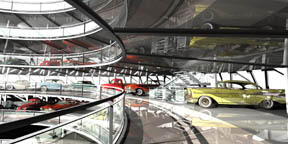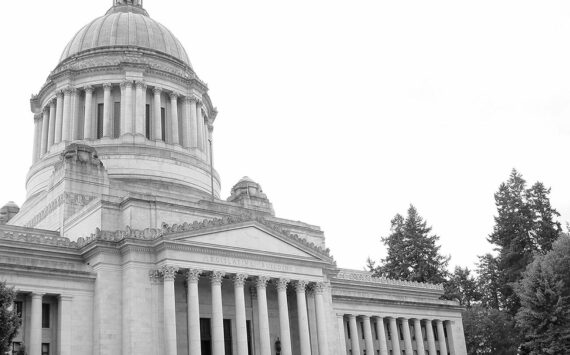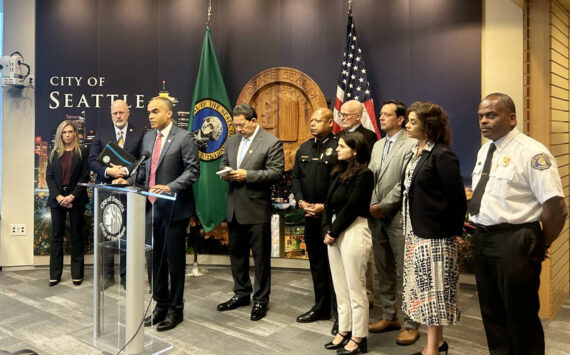Its not just a museum, its an adventure.
That was the theme of Wednesday nights community gathering at the Sheraton Tacoma Hotel, where architectural plans for the proposed Harold E. LeMay Museum were shared with the public.
Were presenting a vision tonight of Americas Car Museum, said David Madeira, chief executive officer of the museum.
Were not just putting up a building, he said. Its not just a museum.
Indeed, the architects have come up with a mixed-use development that will be a gathering place for fun, exploration and celebration, as well as a structure that will become a Tacoma icon.
The four-story buildings curves, glass and chrome are suggestive of an automobile.
I think that will make it stand out from most other buildings youve ever seen, said Alan Grant, project director for Gensler Architects.
The building has been designed in such a way that it will be dynamic and ever-changing from morning to night, Grant explained. During the day, the building is opaque. At night, the building will glow – that is, it will appear transparent and luminous.
As impressive as the proposed museums exterior is, it is the interior – which must be able to accommodate 2,300 museum cars and 350 visitor cars – that truly sets it apart.
Visitors will enter the museum through a dramatic glass wall, cross a spacious lobby pavilion and find themselves at the midpoint of a soaring Great Hall. A spiral track will display rows of cars – an Eiffel Tower of automobiles – an impressive 50 feet up and 40 feet down.
Another 100 cars will be part of several interactive experiences that include an amusement-park-style ride that gives visitors the sensation of traveling at high speed to opportunities to help the preservation and restoration activities.
We need to make sure the museum is a fun place to go to, Grant said.
Appearing to be just four stories, the buildings size will be deceptive. Totalling 750,000-square-feet, there will be storage for up to 2,000 museum cars below grade. There will be 25,000 square feet of exhibits, plus classrooms, a 250-seat lecture hall, a 1,000-capacity banquet facility, a museum store and a cafe. Some 60,000 square feet has been reserved for other dining, retail and entertainment tenants.
The total build out of the campus is estimated to cost in excess of $100 million and is likely to be constructed in two stages. Groundbreaking is planned for 2005, with the museum open to the public in 2007.
The museum is to be built on a nine-acre site that is part of Tacomas $10.7 million contribution to the project. The community requested, and the plans include, an outdoor gathering place. Three acres of the site will be a grassy public expanse for leisurely walks and car rallies.
The design work was funded by a $1 million federal grant.
Attendance is projected to be 560,000 annually in typical years after the opening rush.
Officials praised the community for playing an important role in the design of the world-class museum. People at public design sessions over the last seven months got a chance to have their say.
A lot of what has been done has been influenced by your input, Grant noted.
Judging by the reaction of the standing-room-only crowd, people approved of the design of the building that is to house what the Guinness Book of World Records has recognized as the largest privately owned collection of automobiles in the world.
More importantly, however, the museum will make a reality of Harold LeMays dream of keeping his car collection together in Tacoma for public enjoyment.
LeMay financed his purchases with the fortune he made as the owner of Pierce County Refuse, the 10th largest private refuse hauling company in the United States. He died at age 81 in November 2000.
Nancy LeMay, Harolds widow, was in attendance, and fittingly, she had the last word.
This is great, she said. Harold would be proud of this. Hes going to love it.





